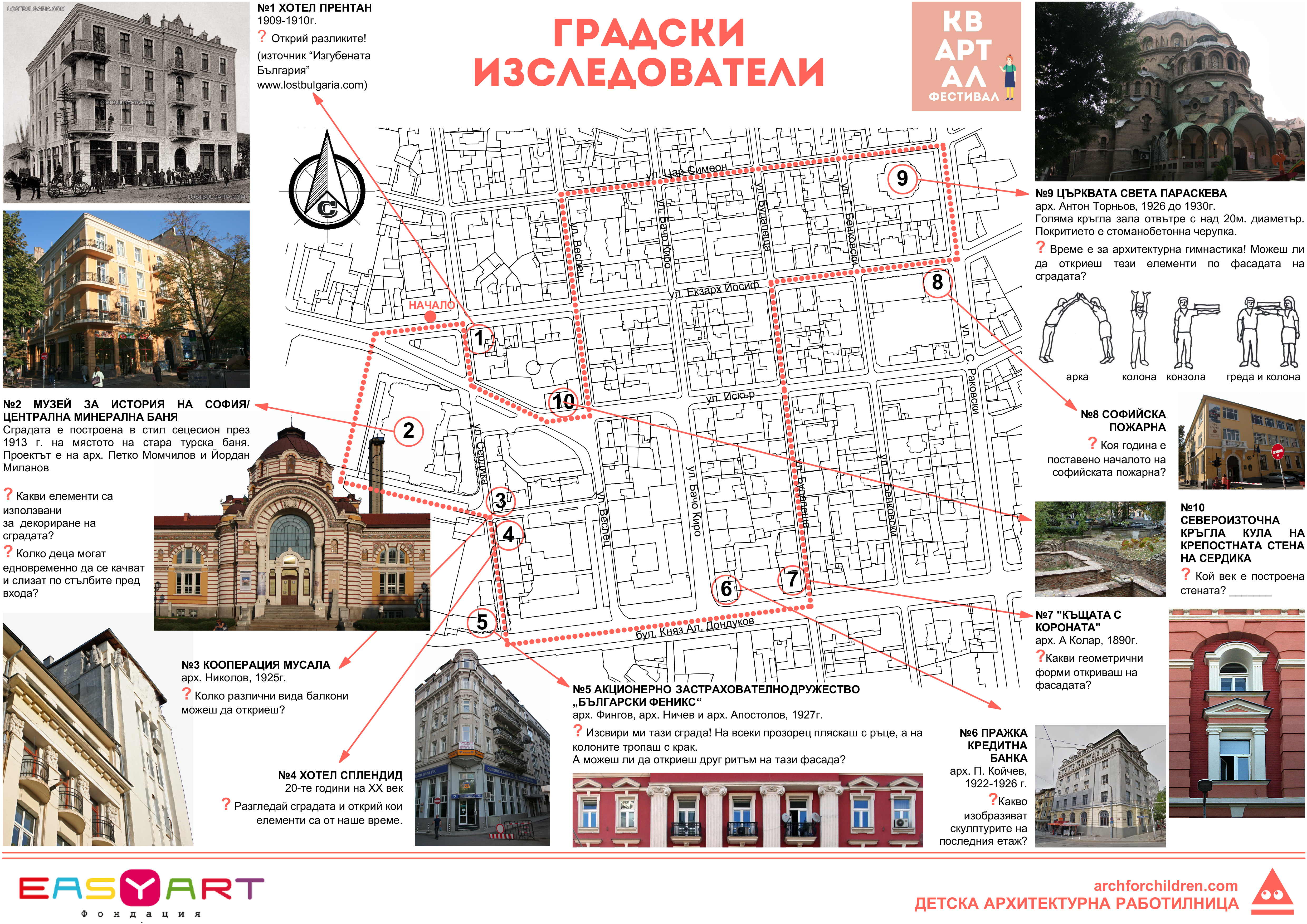Sundays in the Bulgarian capital are ordinarily calm, if not a bit sleepy. But once again their melancholy mood was disturbed! Sofia was rocked by a tribe of raucous children shouting, jumping, and pointing excitedly at the historic buildings. Each child wielded a sharp yellow pencil and a big map. Small groups of kids stood immersed in discussion while others tried to orient the map impatiently. Their parents were also there—either restoring order or themselves gazing up at the buildings.
This happens every time when architect Magdalina Rajeva organizes the “City Explorer” tour. It is an extraordinary event that encourages children and their families to learn about Bulgaria’s rich architectural heritage with fresh eyes.
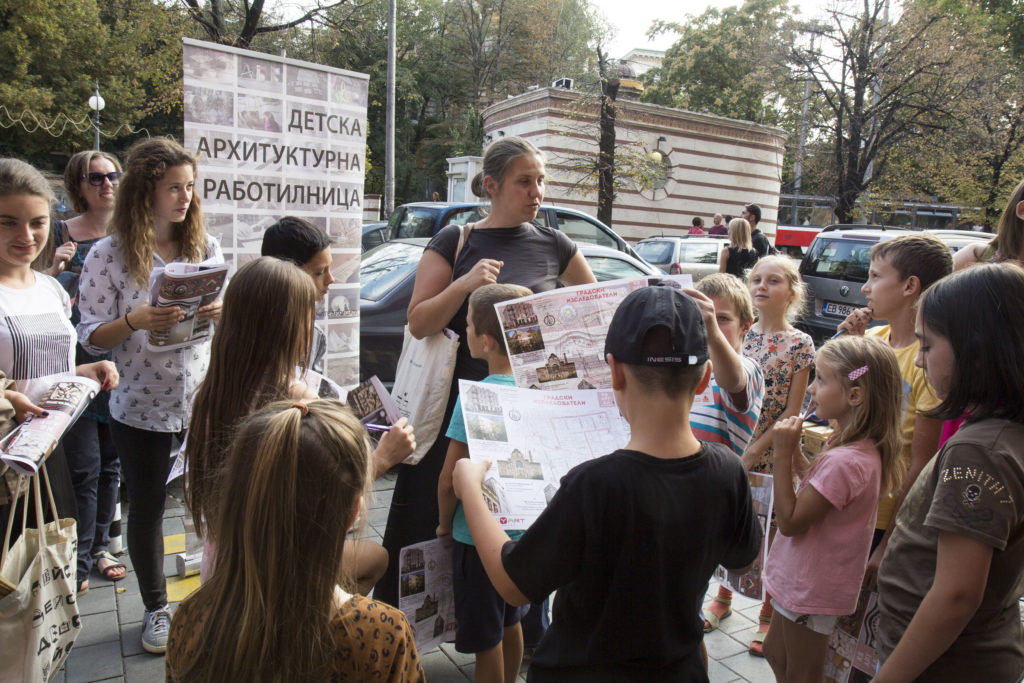
Rajeva is one of the founders of the non-profit association, Architectural Workshops for Children. She and her colleagues, as well as architecture students, develop practical classes for primary school-aged kids. A series of lessons introduce basic architectural concepts in a fun way. The children usually cut cardboard, build models with sticks and clay, or collect samples of unique textures, sounds, and colors. They often ponder what it would be like to live in a village vs. the city, or if they lived in the future. In one lesson, after watching Star Wars they tried to build a fantastical city inspired by the movie out of bright plastic plaques and transparent glue.
“It all started with the simple desire to spend more time with our children, to be together even when we work. They inspired us with this format and showed us the path,” said Rajeva.
The “City Explorer” tour is a different kind of workshop. It is an outdoor weekend adventure. Commonly held in Sofia and Plovdiv, it can be arranged in any other town. All you need is an array of interesting buildings, a map, and mom and dad as navigators.
With these tours, Rajeva promotes the idea that the city is like an open book and architecture can be an educational tool. The historic buildings in particular are among the best for this purpose—they can yield a wealth of knowledge. She argues that the children can practice all their school subjects. Not only history and the arts, but also math, music, geography, and even gymnastics.
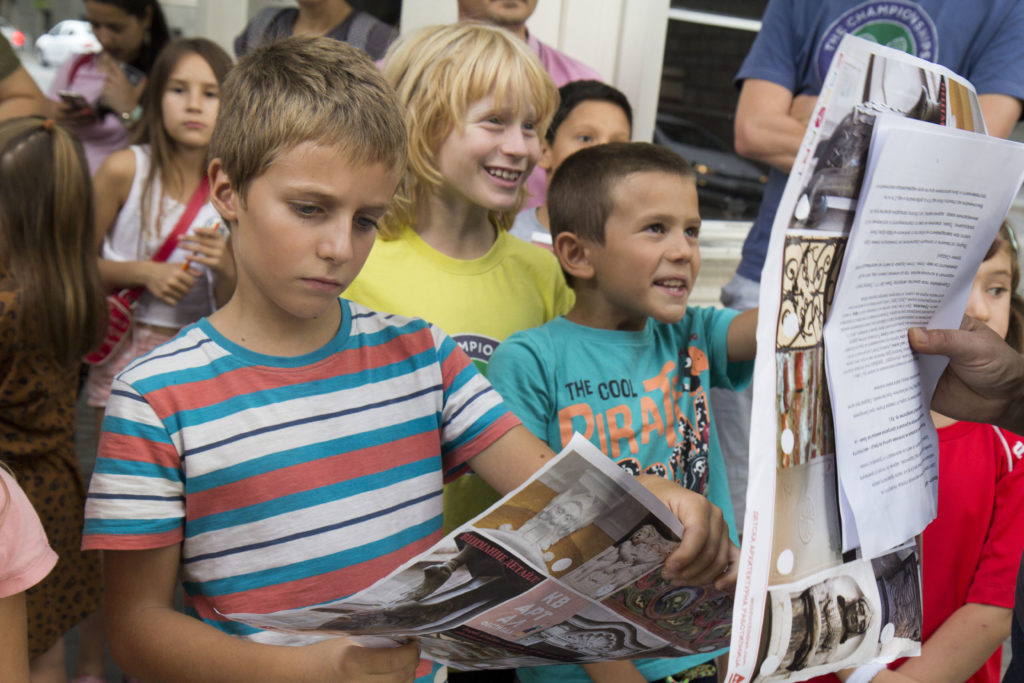
“Can you play the notes of this building for me?” Magdalina asked the children. “For each window clap your hands, and for each column stomp your feet”. The first attempts are always clumsy, but quickly the children get the idea, perfect the rhythm, and soon they are making a lot of noise. “Historic buildings often follow rules of symmetry and repetition,” she explained. “They form an order. We are searching for it from left to right and back from right to left.”
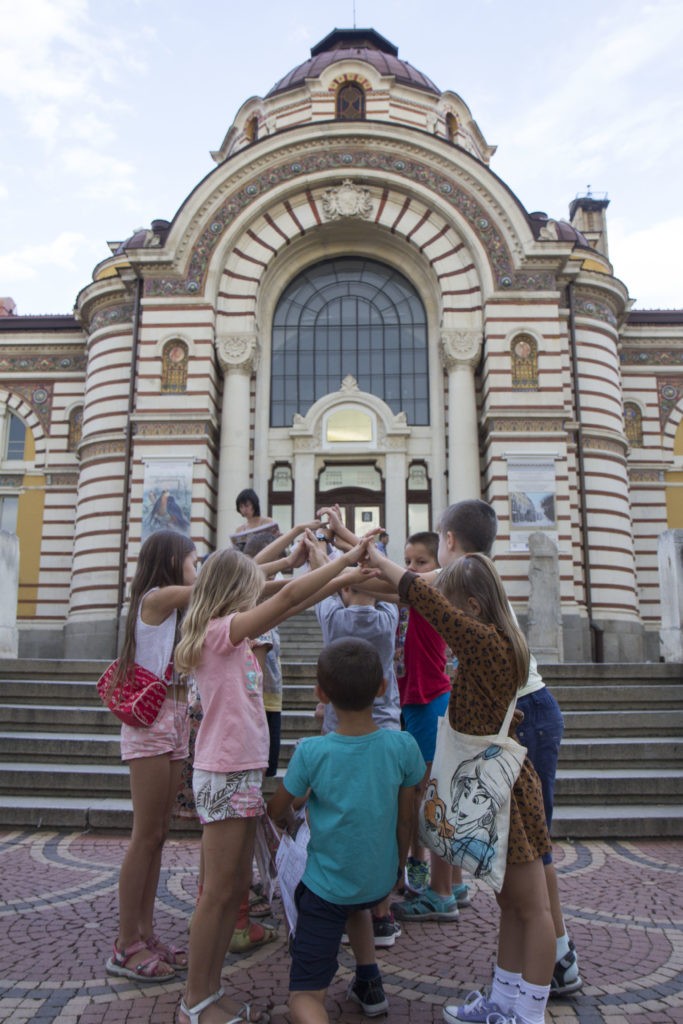
After this short music lesson it is time for architectural gymnastics. If you stand straight and hold your hands to the body you are a column. If you lift them up to 90 degrees—you are a cantilever. Two children can form an arch easily by holding hands. This is just the warm-up. The real exercise is to ‘build’ with these elements the nearby heritage site.
During the tour, the little explorers have to look around very carefully because there is an extra mystery task. They have to find some particular architectural details and put them in the correct order. Suddenly an amazing world emerges: eagles, lions, and exotic plants appear on the walls of historic buildings.
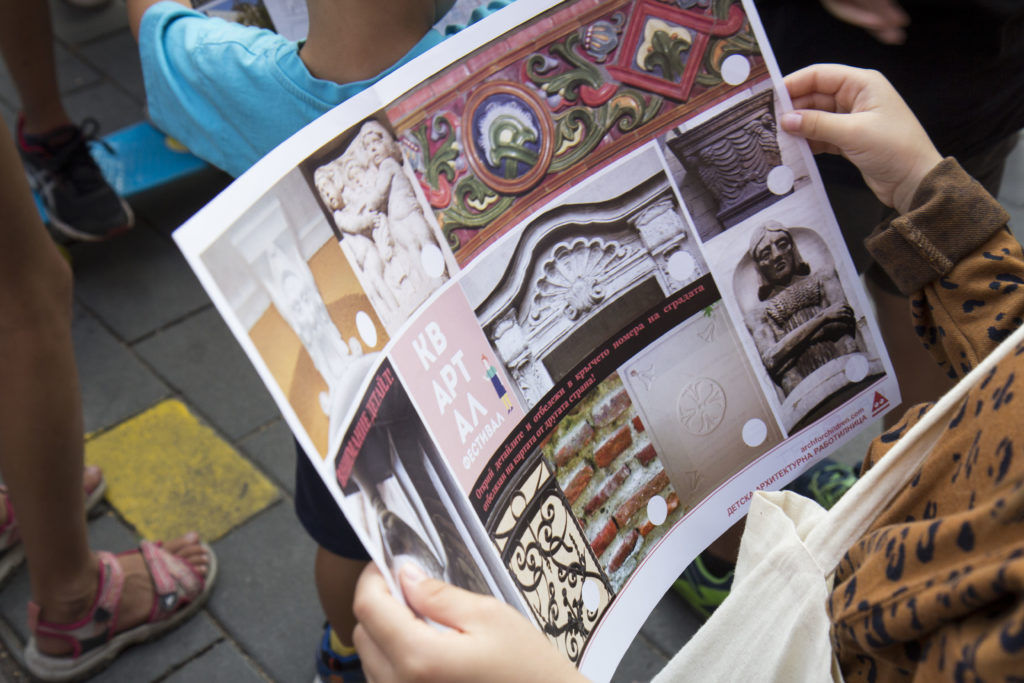
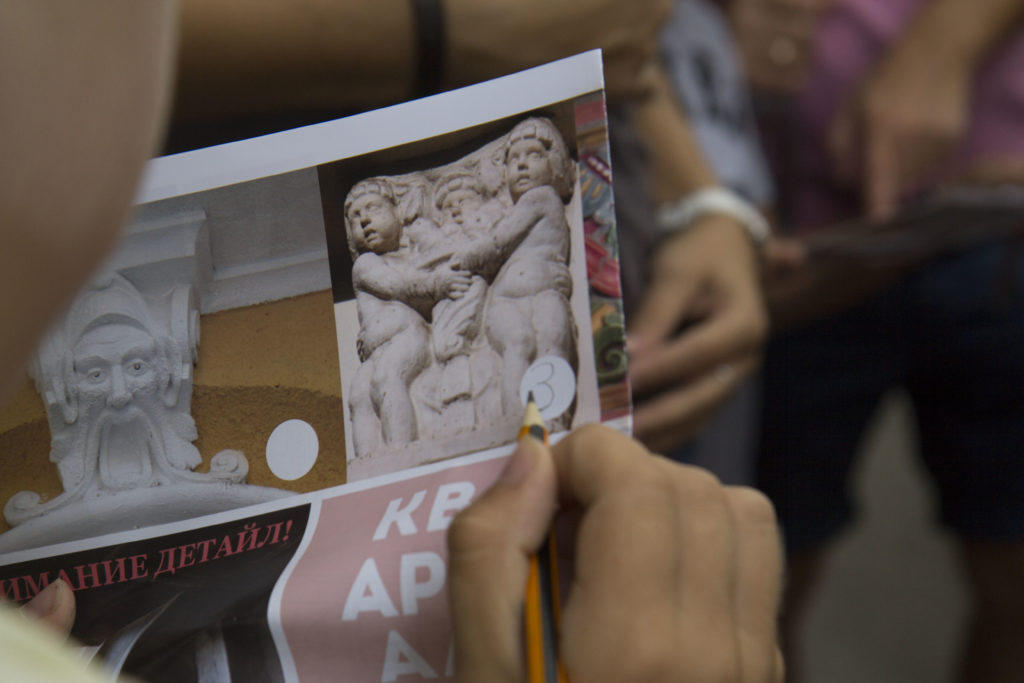
One of the tasks that Magdalina spends a lot of energy on is the illustration of the city changes. She compares archival photos with the current streetscape. The children immediately spot a missing sculpture or a window filled with bricks. But Magdalina insists on naming all the additional elements from our time that are attached to the historic facades (and often block their unique character). You will never be wrong if you say: hanging cable, air-conditioning machine, or flushing adds.
At the end of the tour, Rajeva concedes that her goal is not to prepare future architects. Instead, she wants to encourage teamwork, discovery, critical thinking, and above all, for the children to think of new, creative solutions. But one thing is for sure. From the next day on, heritage will never look boring.
XXXXXXXXXXXXXXXXX
